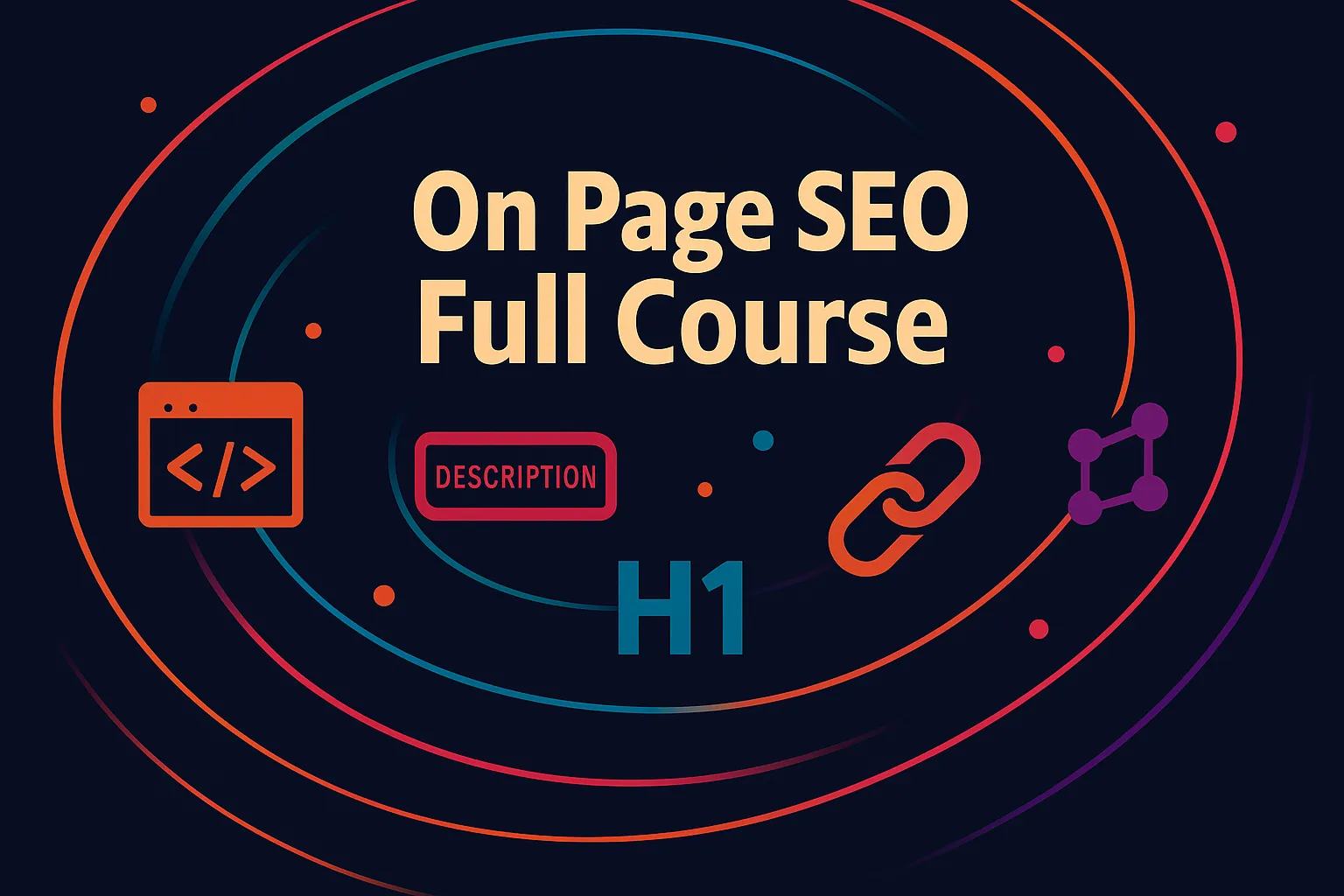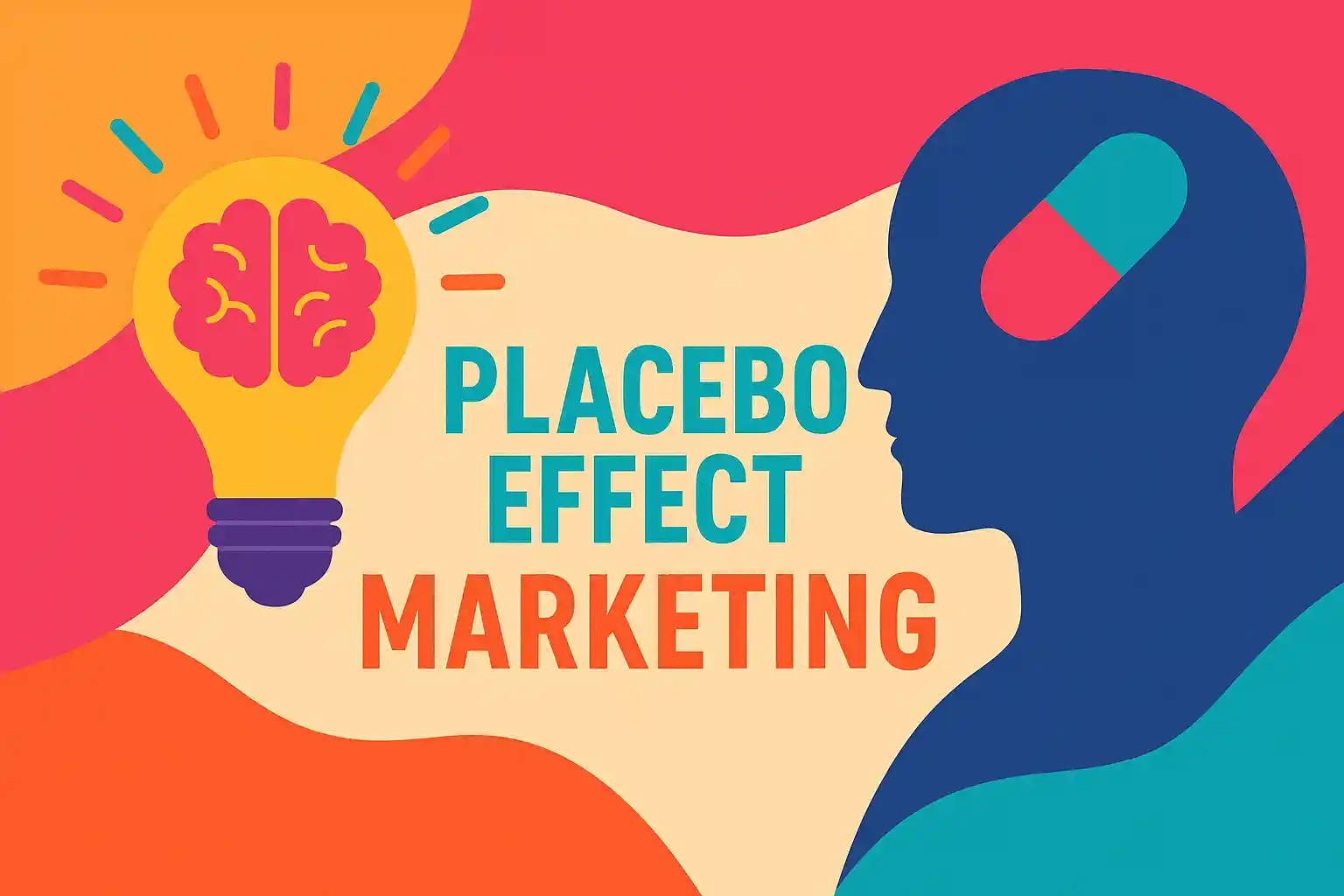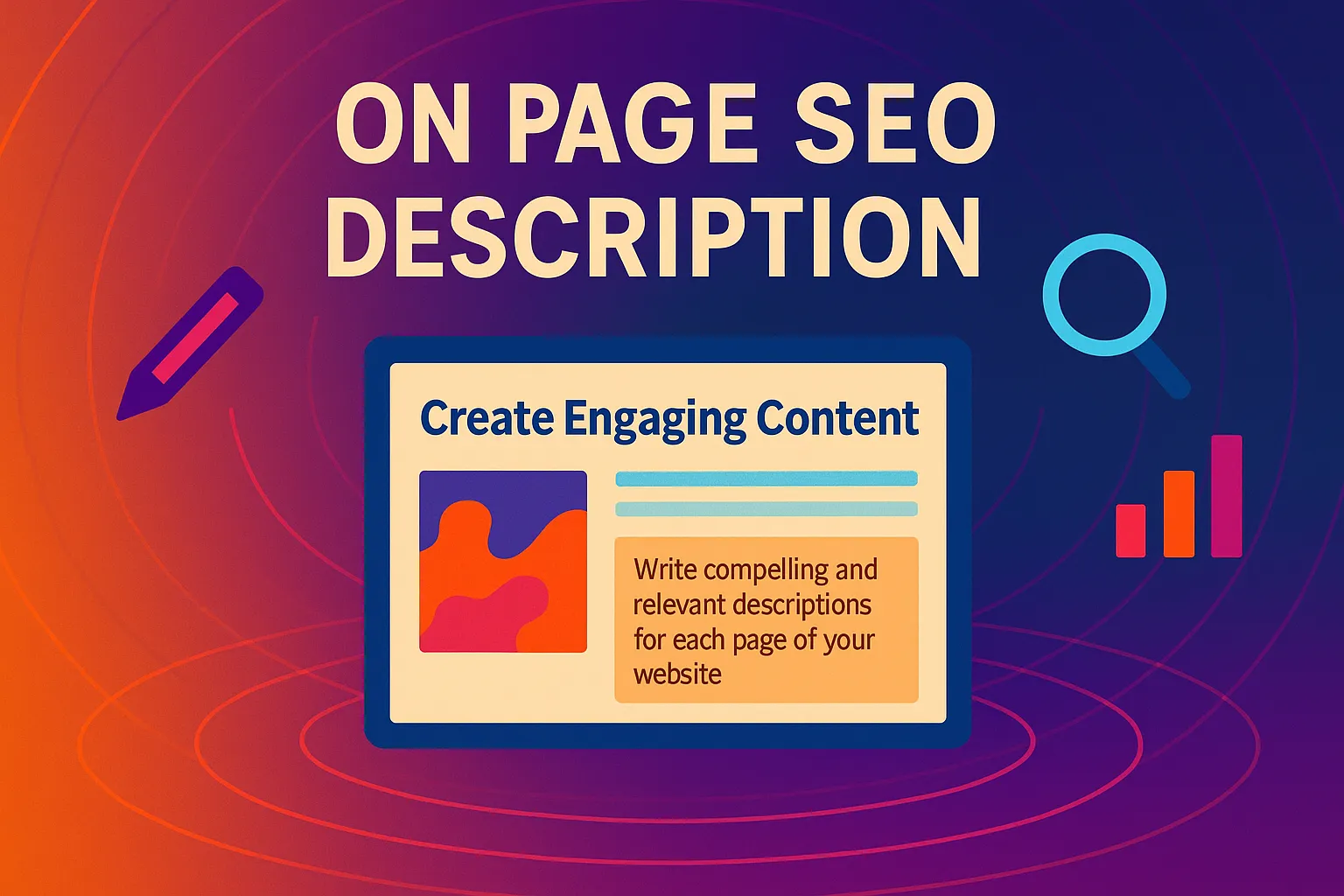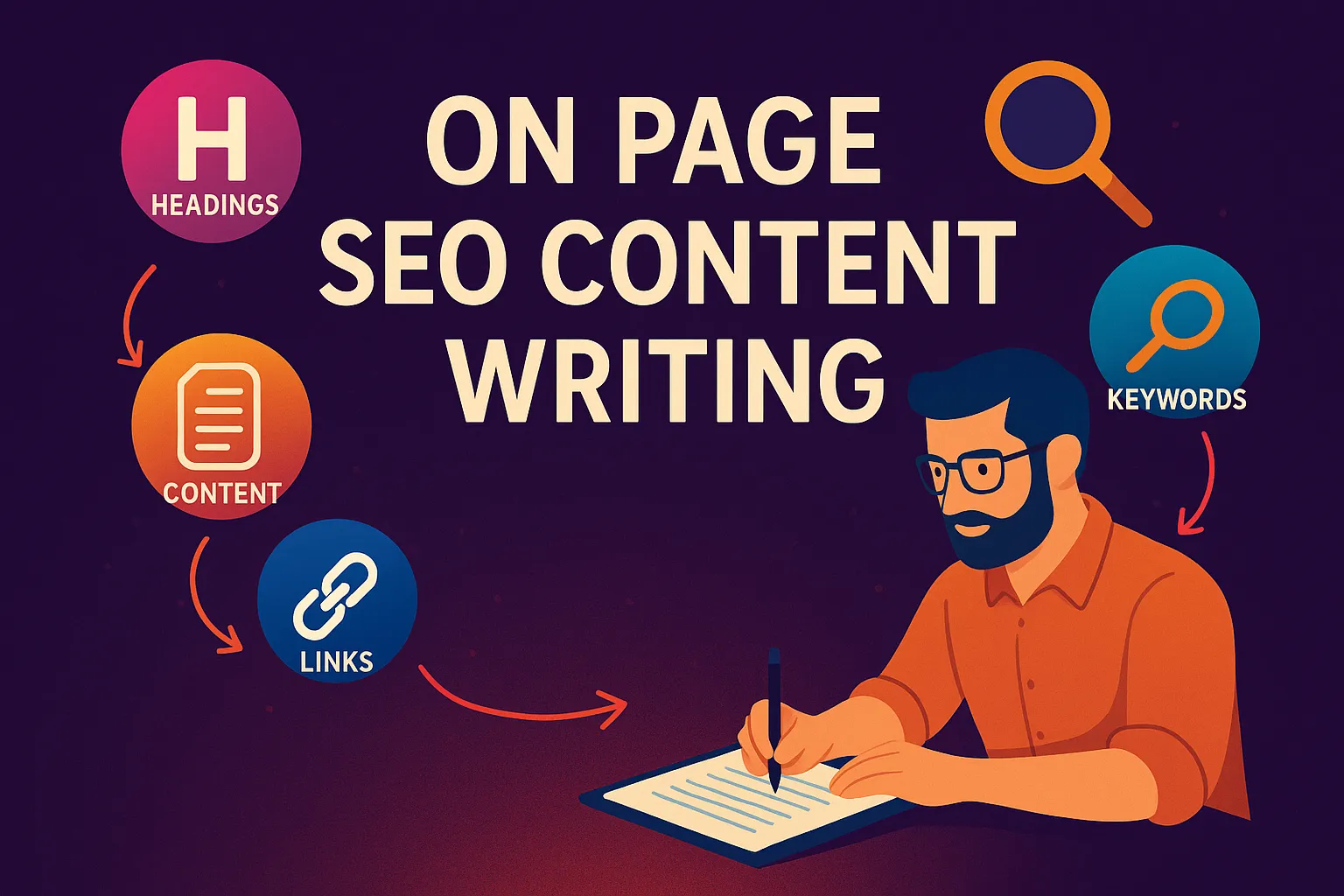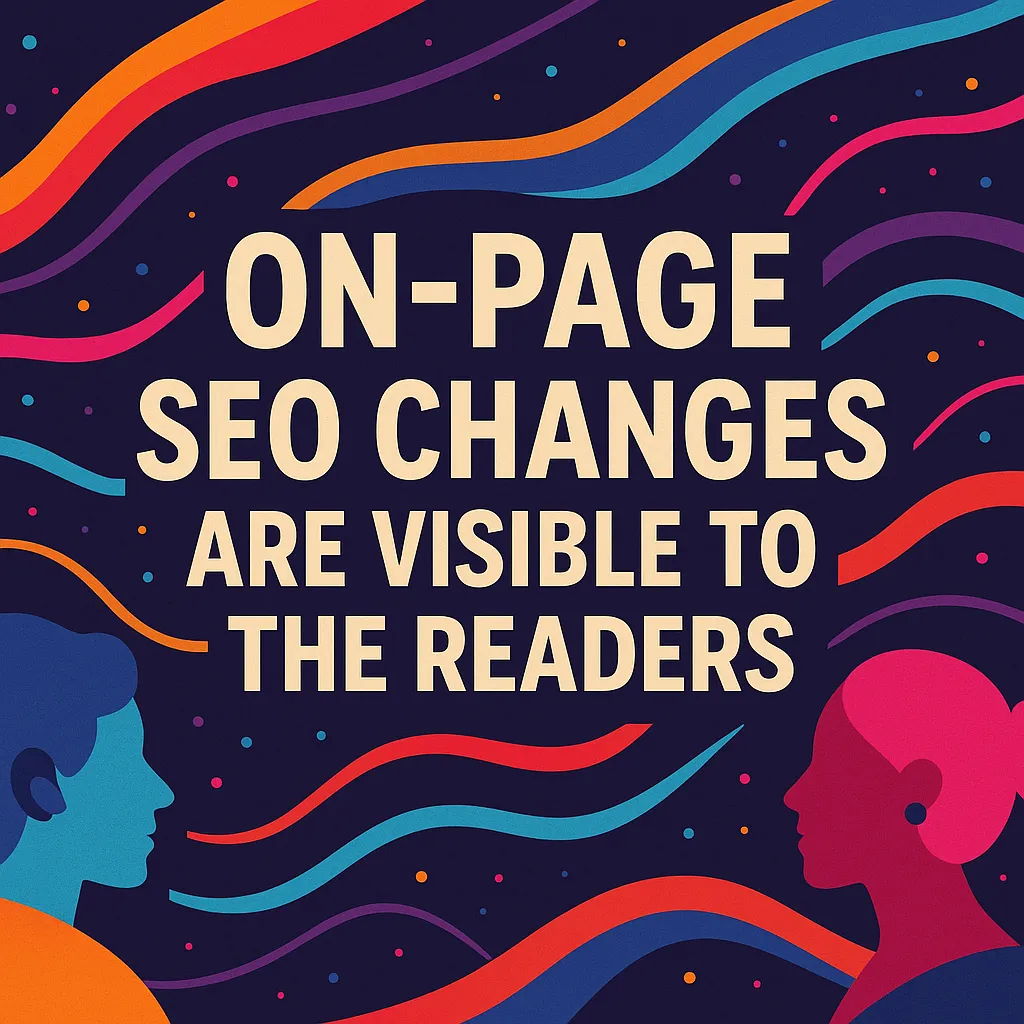What is “on page SEO full course”?
If you’ve ever asked, “How do I get my website to show up higher in Google?” then you’re in the right place. An on page SEO full course is a complete guide that teaches you how to optimize each individual page on your website so it ranks better in search engines.
It includes everything from writing the perfect title tag to structuring content, adding internal links, and making sure your site loads fast and looks good on mobile. In my 10 years running a digital marketing agency, I’ve seen on-page SEO make the difference between a site stuck on page 5 and one that climbs to page 1.
TL;DR – What You’ll Learn in This On Page SEO Full Course
- What on-page SEO is and why it matters for rankings and user experience
- The key elements that make up a powerful on-page SEO strategy
- How to structure and write content that both people and Google love
- Easy ways to optimize HTML tags and improve technical SEO
- The tools and metrics I use in my agency to measure SEO success
- How to learn all of this without needing a computer science degree
- What mistakes to avoid that might be holding your pages back
Why On-Page SEO Matters More Than Ever
Over the past decade at Vibe Branding, we’ve worked with clients from every industry imaginable. One consistent factor across all successful projects?
Strong on-page SEO. It’s what tells Google exactly what your page is about and whether it deserves to rank.
And with the way algorithms work now, it’s not just about stuffing a few keywords anymore. Google looks for context, clarity, and usefulness.
So even if you have amazing backlinks and lightning-fast speed, weak on-page SEO can keep your site buried. That’s why we teach our clients to master these basics first before chasing fancy tools or advanced link strategies.

The Key Ingredients of On-Page SEO
In every on page SEO full course I teach, there are five core elements I always focus on. First, your title tag.
It’s the clickable link people see in search results, and it needs to be clear, relevant, and contain your main keyword. Second, your meta description.
While it doesn’t directly affect rankings, it impacts click-through rates. Think of it like your elevator pitch.
Third, headings like H1 and H2 tags help both users and Google understand what your page is about. Fourth, internal linking—this spreads link equity and helps users navigate.
Fifth, clean, SEO-friendly URLs make your pages easier to find and remember. When these elements are in place, you’ve got the foundation for SEO success.
Structuring Your Content for Humans and Google
One of the biggest mistakes I see people make is writing for robots, not humans. But the truth is, good SEO writing reads naturally.
We teach our team to write in short paragraphs, use bulleted lists, and include section headings that clearly guide readers. Google loves this because it makes your content easier to understand and index.
I also recommend using visuals like charts, images, and even embedded videos where possible—they increase time on page and engagement. And here’s a tip we use at Vibe Branding: make sure your most important information is near the top of the page.
Don’t bury your lead!
Optimizing HTML Elements Without Being a Developer
You don’t need to know how to code to apply on-page SEO best practices. Most modern platforms like WordPress, Wix, and Shopify let you edit things like meta titles, descriptions, and alt text with just a few clicks.
That said, knowing the basics of HTML tags can give you an edge. For example, make sure your H1 tag is only used once and reflects your main topic.
Use H2s to break down content into logical sections. Always include descriptive alt text for images.
And use proper anchor text when linking to other pages—avoid things like “click here.” These small changes add up and help Google better understand your page.
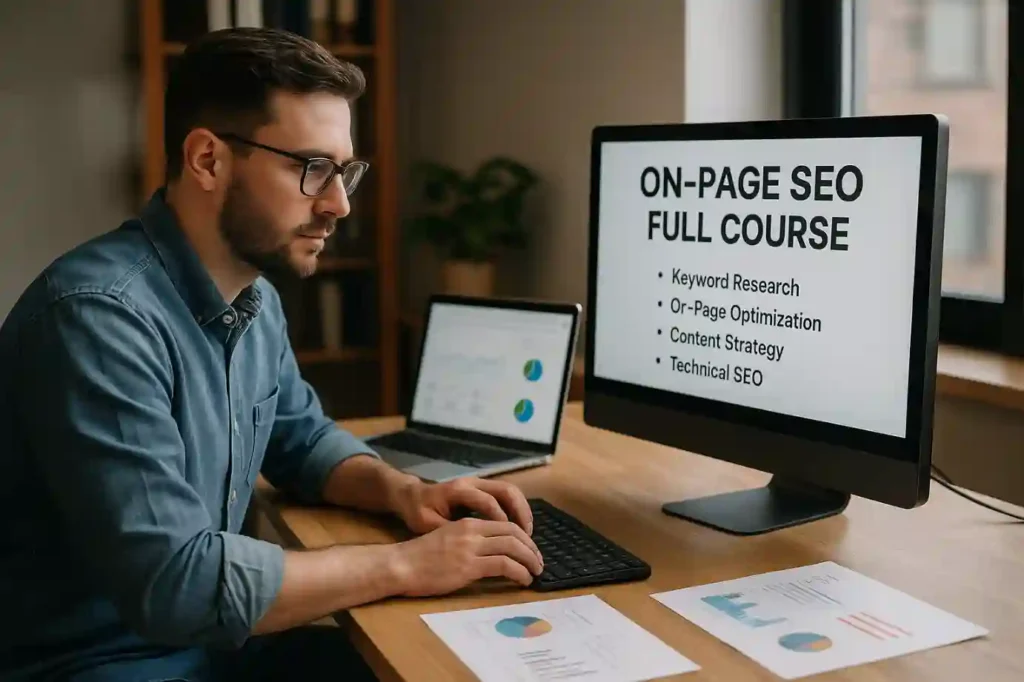
SEO Tools That Help You Do It Right
In our agency, we use a mix of free and paid tools to make on-page SEO easier and more effective. Google Search Console is a must—it shows how Google sees your site.
Tools like Screaming Frog or Sitebulb help us audit technical issues, while Yoast and RankMath guide you as you write. For tracking rankings, we use SEMrush, but Ahrefs and Ubersuggest are great too.
One of my personal favorites is Surfer SEO—it compares your content to top-ranking pages and gives you live optimization suggestions. If you’re a beginner, even just sticking with Google Analytics and Search Console can take you a long way.
Use them to check page speed, bounce rates, and engagement.
Why Page Speed and Mobile Optimization Matter
We can’t talk about an on page SEO full course without touching on Core Web Vitals. Google cares a lot about how fast and smooth your site feels.
A slow, clunky mobile experience can kill your rankings no matter how good your content is. Make sure your images are compressed and lazy-loaded.
Use tools like GTmetrix or Google’s PageSpeed Insights to test your pages regularly. I also recommend responsive design—your site should adapt to phones, tablets, and desktops automatically.
At Vibe Branding, we treat speed optimization as part of every SEO audit because user experience is directly tied to SEO today.
Writing Content That Works Without Keyword Stuffing
You don’t have to repeat your keyword a dozen times for Google to get the point. These days, it’s about intent. Write content that answers questions, solves problems, and offers value.
We always include the target keyword naturally in the title, the intro paragraph, and a few headers—but beyond that, it’s all about relevance. Use related terms and synonyms.
Think about what the reader is really looking for. If someone searches “on page SEO full course,” they want something educational, structured, and thorough.
That’s exactly what we aim to deliver in this post, not fluff or filler. And it’s why Google rewards well-written, useful content.
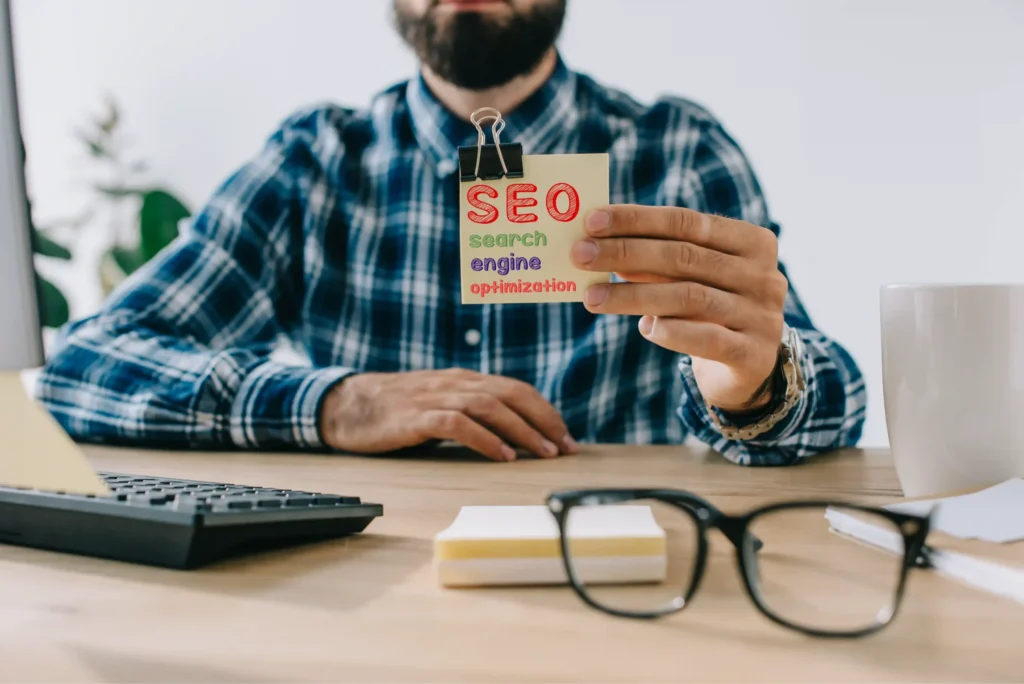
How to Learn On-Page SEO Without a Tech Background
One of the biggest myths I love to bust is that SEO is only for developers or coders. At Vibe Branding, we’ve trained small business owners, artists, and entrepreneurs to master on-page SEO without ever touching a single line of code.
Start with what your platform gives you—WordPress and Shopify have built-in tools or plugins to guide your optimizations. Then practice writing clear, helpful content that targets a specific keyword or topic.
Watch a few videos, follow trusted SEO blogs, and most importantly—test everything. SEO isn’t a one-and-done task. The more you tweak and measure, the better you get.
Common Mistakes to Avoid
Even seasoned site owners slip up on on-page SEO. One common mistake is keyword cannibalization—when multiple pages target the same keyword and compete against each other.
Another is ignoring alt text, which helps with both accessibility and search rankings. I’ve also seen clients forget to set unique title tags and meta descriptions, leaving default values that say things like “Just another WordPress site.”
Broken internal links and poorly structured URLs are other common pitfalls. At Vibe Branding, we include these checks in every site audit because fixing them can make a big difference.
On-page SEO doesn’t require magic, just attention to detail.
Conclusion: Your SEO Success Starts Here
Now that you’ve completed this on page SEO full course, you’re no longer in the dark about what it takes to rank well on Google. You’ve got the tools, the structure, and the strategy—all that’s left is action.
Whether you’re updating your site’s title tags or writing your next blog post, you’ll be doing it with clarity and confidence. The truth is, on-page SEO isn’t a one-time task.
It’s a habit. And just like we tell every client at Vibe Branding, the more consistently you apply what you’ve learned here, the more your visibility will grow.
Bookmark this post, come back to it, and share it with your team. Because when your pages win, your brand wins.

